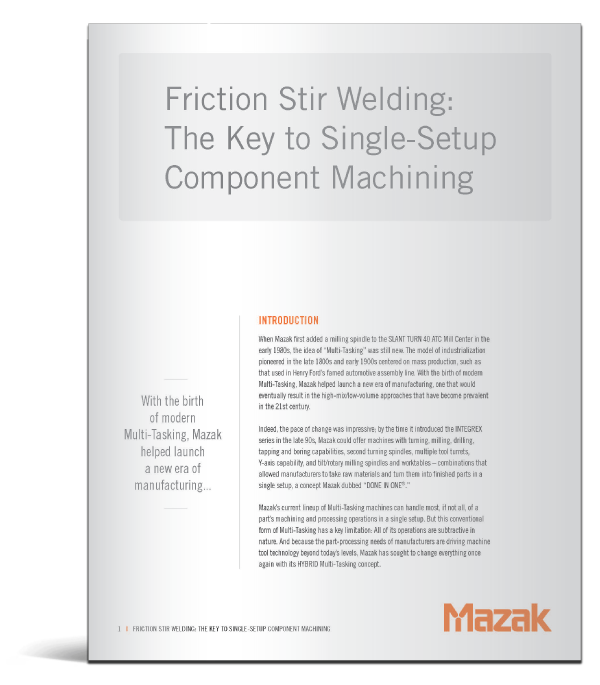Friction Stir Welding: The Key to Single-Setup Component Machining

When Mazak first added a milling spindle to the SLANT TURN 40 ATC Mill Center in the early 1980s, the idea of “Multi-Tasking” was still new. The model of industrialization pioneered in the late 1800s and early 1900s centered on mass production, such as that used in Henry Ford’s famed automotive assembly line. With the birth of modern Multi-Tasking, Mazak helped launch a new era of manufacturing, one that would eventually result in the high-mix/low-volume approaches that have become prevalent in the 21st century.
First introduced by The Welding Institute in 1991, friction stir welding generates heat with friction using a rotating pin pressed against a workpiece. Particularly useful with metals with low melting points, including aluminum, FSW creates joints that require little post-processing, use no filler material, resist corrosion and produce a wide range of join types, including hollow ones. Furthermore, FSW can even join dissimilar metals, which represents a major step forward in welding technology.
Download our Friction Stir Welding white paper to learn more about the Mazak Friction Stir Welding system.
